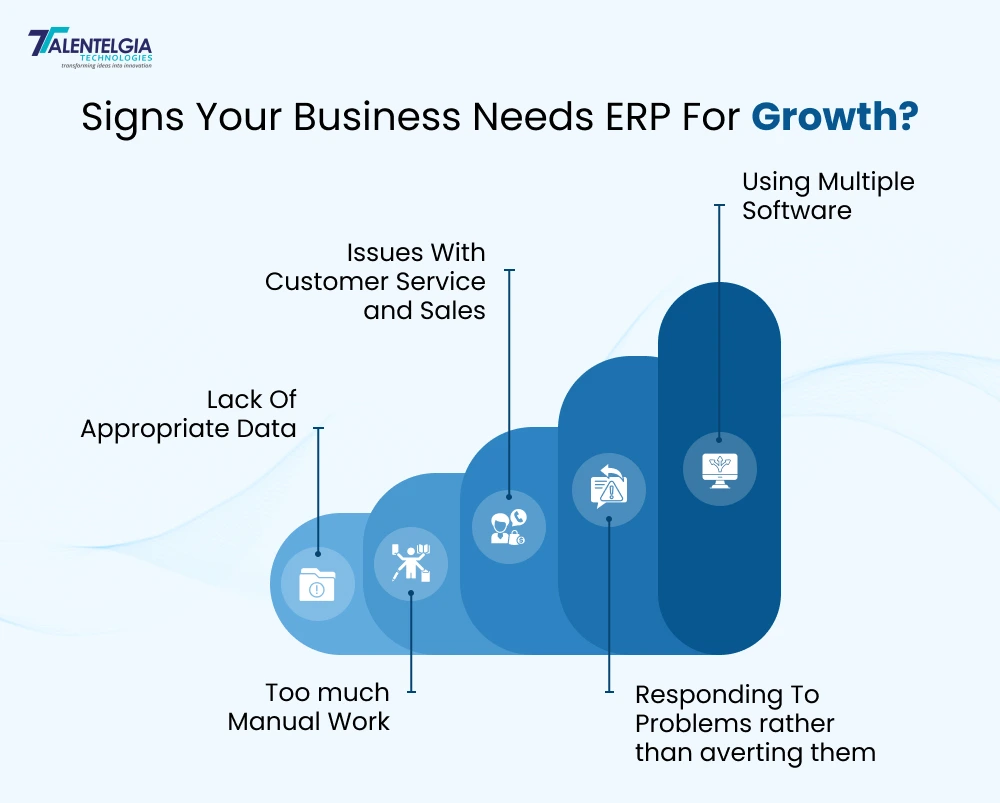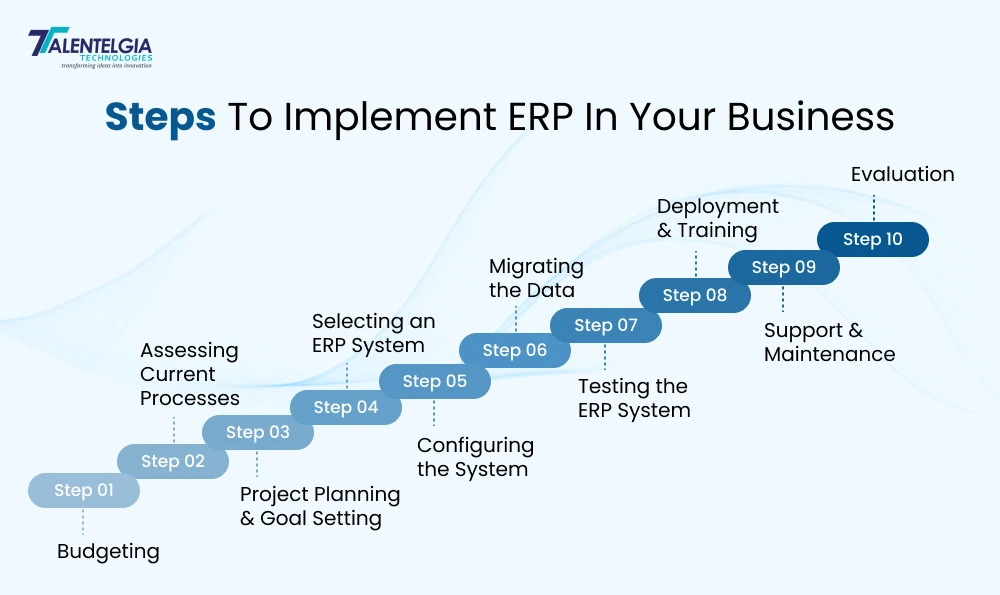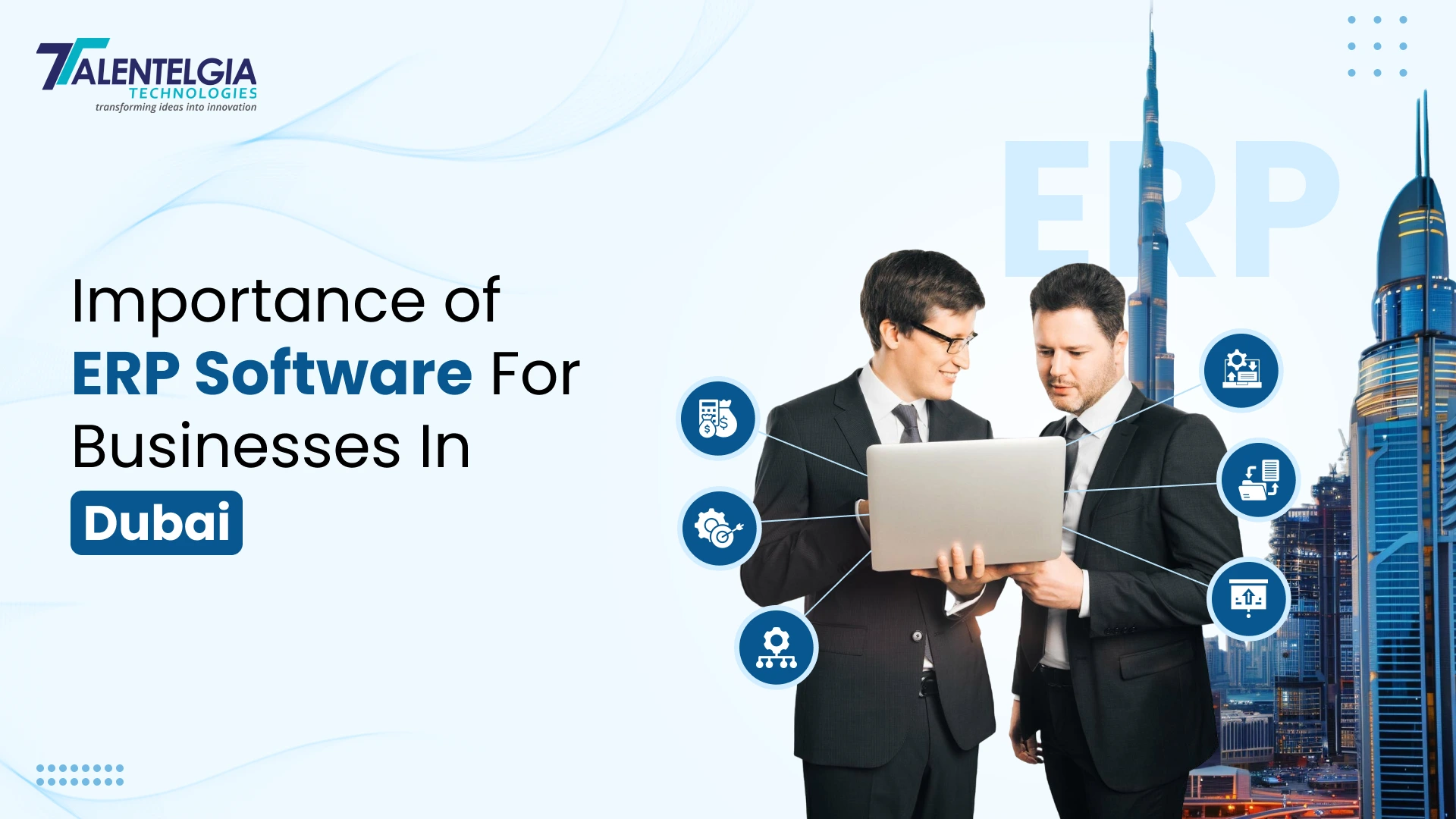The business environment of Dubai is marked by fast growth, innovation, and stiff competition. Organizations that thrive in this dynamic sector are constantly challenged with the need to optimize procedures, achieve seamless coordination between departments, and keep pace with constantly evolving market pressures. This can be ascertained by the fact that as per Statista, the Enterprise Resource Planning (ERP) software market in the United Arab Emirates is expected to generate US$151.20 million in revenue by 2025 end.
In such a dynamic system, ERP (Enterprise Resource Planning) software is more than an application; it is a critical tool for companies that intend to streamline operations and stay competitive. In this blog, we are going to discuss how ERP software is essential for companies in Dubai, and through which ways it can assist them in their growth and success.
What is an ERP System?
Enterprise Resource Planning (ERP) software solutions efficiently assist organizations in automating. They help in activities like purchase orders and supplier agreements, general accounting, project management, risk management, compliance, and supply chain management. An ERP system provides one database across departments; it gives you one solution for nearly all things business-related.
Enterprise performance management software can be found inside an ERP suite. This will help an organization plan, budget, forecast, and report its financial performance. The integration will help to eliminate data silos, enhance accuracy, and bring about consistency.
Signs Your Business Needs ERP For Growth?
When businesses expand, they encounter universal issues that hinder their progress and confine efficiency. Identifying indicators that your company requires an ERP system for growth is crucial in confronting these matters directly. Here are important signals that indicate your company may find it beneficial to implement an ERP solution.

1.Lack Of Appropriate Data
When information is inaccurate, out-of-date, or dispersed across disparate systems, decision-making is guesswork. Managers cannot make good decisions based on incomplete or flawed information. With no centralized, real-time information, companies find it difficult to derive useful insights into their business.
This ambiguity can result in making poor choices, leading to lost opportunities and costly errors. For instance, obsolete financial information might result in overly optimistic budgets or inefficient cash flow management. In the same vein, inaccurate inventory information might delay production or order fulfillment by customers.
Data management errors will compound, ultimately affecting profits, employee productivity, and customer satisfaction. Eventually, this inhibits your capacity to remain competitive in the marketplace. An effective ERP system guarantees that data is accurate, accessible, and actionable, allowing for informed decision-making at all levels.
2. Too Much Manual Work
Manual activities such as data entry, consistency checking, and copying information between systems are not only time-consuming but also prone to errors. Such mundane tasks waste precious time that could otherwise be used on more value-add activities. Employees end up working hours on activities that have minimal value, which creates frustration and overall productivity loss. Errors in data entry and copying also lead to expensive errors and delays, causing operational disruption.
An ERP system automates and simplifies these day-to-day activities to a large extent, saving a lot of manual intervention. Centralizing information from all the systems, it maintains accuracy and consistency in real-time. The automation enables the employees to spend more time on higher-value work, increasing productivity and business performance. In the long term, an ERP system not only saves time but also improves the overall efficiency of the organization.
3. Issues With Customer Service And Sales
When your resource management is all over the place and scattered. growth seems far away. Information regarding customers, transactions, and sales is stored in various systems, and therefore, it is difficult to manage. As your business grows, this fragmentation increases, resulting in lost opportunities and delayed responses to customer needs.
An ERP system implements all these processes into a single platform. With complete analytics and easy access to real-time information, executives and management can make better decisions. This enhances the quality of customer service, increases customer loyalty, and brings out the weak areas in your operations. An ERP system finally enables your business to scale efficiently and discover new growth opportunities
4. Responding To Problems Rather Than Averting Them
Relying on a reactionary fix to issues can leave your company in the slow lane. Microsoft Business Central gives you the power to be proactive. By adjusting inventory levels or optimizing workflows ahead of time, you can avoid issues before they happen.
With an ERP system, you can use data-driven decisions that allow you to detect potential pitfalls on time. By addressing problems before they become major problems, you can have uninterrupted operations. Real-time insights allow you to make adjustments on time and prevent discontinuity, setting your business up for long-term success.
5. Using Too Many Software Products
When various departments have different systems, it is chaotic. For instance, your accounting department might be using one software, while HR, sales, and warehouse staff use others.
Utilizing multiple, disparate systems impedes efficiency and introduces data inconsistencies. This siloed methodology yields inaccurate, useless data that can harm your business. Moreover. separate systems make processes cumbersome and impede seamless communication between teams. Streamlining processes through an ERP system makes workflows easy and guarantees accurate, current data throughout your company.
Steps To Integrate ERP In Your Existing System
To implement an ERP system successfully into your current business processes, some very important steps must be well thought out and followed. These steps help in a smooth transition so that the system can aid in the growth and efficiency of the organization. Let’s look at each of these steps.

1.Budgeting
Before embarking on the ERP implementation, the project manager needs to have a defined budget and ensure that the project is approved. The initial budget may not be permanent but acts as a guideline for the scope of the project. Having clear financial boundaries assists with setting expectations and ensuring resource allotment for the project.
2. Evaluating Existing Processes
To identify inefficiencies, obsolete methodologies, and gaps in operation, an extensive examination of current business processes is to be conducted. Such analysis aids in determining which areas need improvements and helps in document creation. Knowledge of the existing processes is another prime factor in outlining how the new ERP system will be able to automate and enhance these processes.
3. Project Planning and Goal Setting
ERP project manager, in consultation with organizational leaders, puts together a project team of subject matter experts and stakeholders. The project team will set specific goals for the project, document exact requirements, and create a plan that has milestones for every step of implementation. Project planning allows all concerned parties to know what is expected of them and by when.
4. Choosing an ERP System
Choosing the right ERP system is central to the success of the implementation. The project team must review several vendors by conducting demos and asking relevant questions to understand the functionality offered. It’s essential that the chosen ERP system addresses the business’s specific requirements and offers post-implementation support and services.
5. Configuring the System
ERP system configuration involves the process of aligning it with the technical needs and specific requirements of the organization. This stage usually entails the configuration of modules such as accounting, HR, or supply chain to align with business objectives. The assistance of a seasoned ERP implementation partner guarantees that the system is fully customized to suit the operations of the company for a smooth setup.
6. Migrating Data
Data migration is significant and complex, often accompanied by the processes of transferring historical and current data from obsolete systems to an ERP, cloning the data, etc. It is during this procedure that the data will be subjected to cleaning, organization, and formatting conforming to the new system. At this stage, a great deal of planning is important, as one wants to concentrate only on the necessary data that need to be migrated so that this aids in reducing the chances of errors and inconsistencies.
7. Testing the ERP System
Testing is a continuous process throughout ERP implementation. However, at this stage, testing of the ERP system functionality is done to verify that it works as designed. All the key users must be involved in testing to confirm the system is suitable for the organization’s requirements and needs.
During testing, any problems or bugs that are found must be fixed as soon as possible. The success of the test phase will have a direct bearing on the success of the overall operational efficiency.
8. Deployment and Training
After all the testing levels have been completed, the ERP system is ready to be deployed. Before you go live, thorough training should be delivered to all users, employees, and third-party users, so that they know how to use the system and its functionalities. The training should be customized as per requirement so that employees are properly prepared for the transition.
Even post-deployment, users might require further assistance as they transition to the new system. A properly planned training and support strategy reduces disruptions and helps users get the best out of the ERP system.
9. Support and Maintenance
Once implementation is complete, the ERP system must be supported and maintained continuously to ensure it keeps running smoothly. Post-implementation support, user support, troubleshooting, and periodic maintenance must be addressed by a specialized team. The team also ensures the system remains adequate for business purposes by undertaking needed updates, modifications, and optimizations.
10. Evaluation
The assessment stage measures the general success of the ERP implementation of the original business requirements. Feedback from all parties—project teams, end users, and management—identifies areas of success and areas requiring improvement. The assessment ensures gaps are filled before the next planning cycle.
Benefits Of ERP Implementation
ERP systems have many advantages, beginning with improved data security. By keeping all data in a single system, ERP reduces unauthorized access and provides improved protection for sensitive information. Cloud-based ERP also enhances security by spreading data across multiple servers. ERP also integrates and makes the data standardized, eliminating inconsistency, and making reporting and decision-making tasks less complicated. ERP systems also ease compliance by having instant access to current records and user-specified report tools, making it simpler to track and comply with industry regulations.
The other significant advantage is enhanced productivity. ERP eliminates tedious tasks, freeing employees to perform more valuable tasks. It accelerates processes through rapid access to required information. ERP enhances departmental transparency, supporting better decision-making and collaboration. Managers can make informed decisions by utilizing real-time information, optimizing efficiency, and reducing the need to hire more workers. Overall, ERP systems make organizations more efficient, saving time and resources.
How Talentelgia Technologies FZCO Can Help?
At Talentelgia, we create custom ERP solutions designed specifically for your company. Our experienced team has expertise in successful implementations of complex ERP software that knitted all departments and enhanced operational efficiency. We are a leading web development company in Dubai that understands your exact requirements to deliver personalized care right from the early stages to the implementation. Our broad industry expertise helps us touch areas such as data protection, process automation, and real-time insights for growth. Whether you want to shift, optimize, or extend your ERP system, be sure that we will be here to Partner with you to ensure a successful ERP transformation.
Conclusion
Apart from automating internal processes, creating data security, and helping companies keep a competitive edge in a rapidly changing market, ERP systems have become essential for any Dubai business.ERP are used for integrating other key functions like accounting, procurement, and supply chain management efficiently. This allows for a very smooth flow of the overall process enhancing decision-making and productivity.
ERP solutions arrive like a savior for companies that are bogged down with data inaccuracies, overloading of manual workload, and inefficient processes so that they can develop and thrive. Talentelgia is dedicated to enabling companies in Dubai to make the most out of ERP software and guiding them through the installation of this software to ensure a smooth transition and long-term success.













 Business:
+971 565-096-650
Business:
+971 565-096-650
 Write us on:
Write us on:  Business queries:
Business queries:  HR:
HR: 




